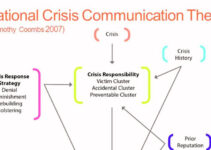Crisis communication is the method of effectively communicating to address the concerns of the public during a crisis event or incident. The objective of crisis communication is to convey the right and accurate information to the public, media, customers, and stakeholders. However, it allows the company to earn the public trust and confidence, and maintain the company’s reputation. Today, we’ll discuss crisis communication and response; the 4 stages of crisis communication and response.
Tips for Successful Crisis Communication Strategy
- Preparing in advance
- Analyzing the situation
- Responding and Acting quickly
- Allocating a special spokesperson for the crisis
- Crafting your message
- Evaluating response to social media
- Correcting the misinformation
- Compassion and empathy
- Learning from the crisis and taking precautionary steps
Stages of Crisis Communication and Response
Some of the main stages of crisis communication and response are as follows;
Pre-Crisis & Prodromal Stage
It is the pre-crisis stage when the company prepares for any type of crisis situation like; natural disasters, cyberattacks, or shooting incidents. These crises and other types of incidents and accidents could happen without any prior warning signs. Some crises like transport disruption and extreme weather crises could come with various warning signs like social media coverage and weather warning signs.
While preparing for the crisis incident, you should keep in mind various factors that would potentially impact your company. Recognizing the warning sign is the first step for the company to decrease the impact of the crisis; and avoid and prevent the disruption. You should keep in mind the following steps while preparing for the mitigation plan;
- Crisis communication strategy that would guide you to communicate urgently
- Connecting with employees to ensure their well-being and safety
- Collect all the required information about the crisis template
- Create a crisis management strategy and distribute it to your team members
- Proactively analyzing various potential threats that would cause a potential threat to the employers, work, and travel
- Canceling or rescheduling the trip due to the civil unrest in the country
- Conduct training exercises for employees to run, hide, and fight during the shooting incident to decrease the impact of injuries
- Launching simulation programs to ensure that the employees are ready for the crisis and what actions to take during the crisis
Actual Crisis Stage
It is the crisis incident happening stage when the company observes the signs of the crisis. They may be small and they help you to avoid the crisis from happening. Now, your focus should be on conducting the risk analysis to effectively respond and decrease the impact of the crisis. Some of the main steps you should take during the crisis incident stage;
- Diagnose the type of risk
- Know the people involved in the risk
- Select the right response plan to activate
- Employ emergency communication software to connect with multiple employees at once and send them text messages, calls, and emails
- Make sure all the affected employees receive the text message
It is nearly impossible to manually analyze all the potential threats, you should have proper tools and equipment to monitor the attract, its impact, and the affected parties
Response and Chronic Stage
Crisis communication response is the stage when you employ all the available resources to manage and resolve the emergency situation. You should mobilize your crisis team to take all the necessary steps. It is significant to know how long the crisis would last, it may be a few days for the snowstorm. Some of the main steps you should take are as follows;
- Mobilize crisis response resources
- Evacuate the building and the facility
- Contact the IT and tech service providers to restore the services
- Shutting down the gas services if the leakage
- The crisis response team should make quick and immediate decisions that would help them to effectively reduce the crisis and
Post Crisis & Resolution Stage
You have reached the stage where you have successfully managed and communicated the crisis. Employees could return back to their operations. Depending on the type of crisis, it takes a lot of time and resources. Some of the main steps you should take to recover from the crisis are as follows;
- Repair the building
- Recovery impact on the mental and physical health of employees
- Taking steps to return to normal routines based on suitable times
- Offering additional support and counseling if needed
- Building the PR department to rebuild the trust and confidence of customers and employees
- Making sure that employees have returned to the normal routine operations
- Beware of the fact that Conflict resolution takes a lot of time
- Develop an emergency response plan and gather relevant information
Conclusion: Stages of Crisis Communication and Response
After an in-depth study of the stages of crisis communication and response; we have realized that crisis response is highly significant to manage the crisis situation. If you are learning about the crisis response stages; then you should keep in mind the abovementioned stages of crisis management response and tips for crisis communication.
Ahsan is an accomplished researcher and has a deep insight in worldly life affairs. He goes Live 3 days a week on various social media platforms. Other than research writing, he’s a very interesting person.


